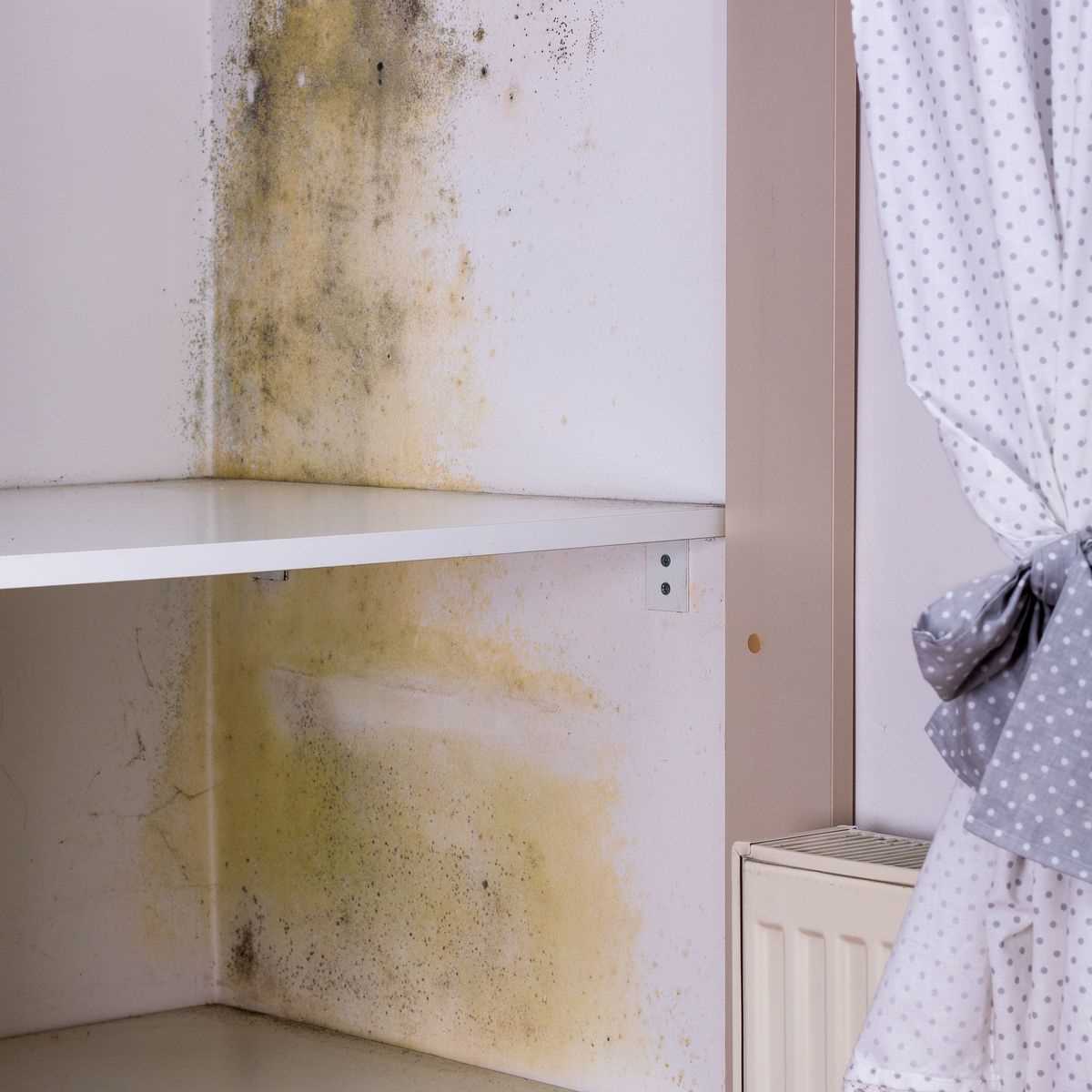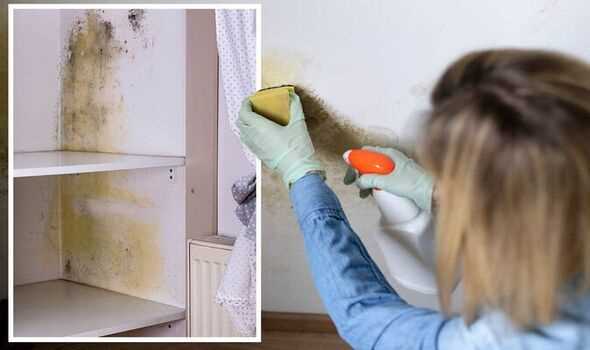




Having mould growth in your wardrobe can be a frustrating and unhygienic problem. Not only can it damage your clothing and accessories, but it can also negatively impact your health. Mould thrives in damp and dark environments, making your wardrobe the perfect breeding ground.
To prevent mould growth in your wardrobe, it is essential to keep it clean and dry. Regularly check for any signs of moisture, such as dampness or condensation, and address the issue promptly. Additionally, proper ventilation is key to preventing mould growth. Ensure there is adequate air circulation by leaving some space between the clothes and the walls.
Another effective way to prevent mould in your wardrobe is by using moisture absorbers or dehumidifiers. These devices help remove excess moisture from the air, making it less favourable for mould to grow. Place them strategically in your wardrobe, especially in areas that are prone to dampness.
When it comes to storing your clothes, it is important to clean and dry them thoroughly before putting them away. Mould can easily spread from one item to another, so it is crucial to ensure all your clothes are mould-free. Additionally, consider using breathable storage containers or bags, as they allow air to circulate and discourage mould growth.
By following these effective ways to prevent mould growth in your wardrobe, you can maintain a clean and healthy environment for your clothes and accessories. Regular maintenance, proper ventilation, and moisture control will help protect your belongings and prevent the unwanted growth of mould.
Proper Ventilation

Ventilation is an essential factor in preventing mould growth in your wardrobe. Poor air circulation can create a damp environment, which is an ideal breeding ground for mould and mildew. Here are some effective ways to ensure proper ventilation:
- Keep the wardrobe doors open for a few hours each day to allow fresh air to circulate and dissipate any moisture that may have accumulated.
- Consider placing a small fan or dehumidifier near the wardrobe to improve air circulation. These devices can help reduce humidity levels and prevent moisture from settling inside the wardrobe.
- Avoid overfilling the wardrobe as it can hinder air circulation. Leave some space between clothes and items to allow air to flow freely.
- If your wardrobe is situated against an external wall, ensure there is proper insulation to prevent any cold spots that can lead to condensation. Cold spots can provide a perfect environment for mould growth.
- Regularly clean and dust the wardrobe to remove any spores that may have settled. A damp cloth or a mild cleaning solution can be used to wipe down the interior surfaces.
- Use moisture-absorbing products such as silica gel packets or charcoal deodorizers inside the wardrobe. These products can help absorb excess moisture and prevent mould growth.
By ensuring proper ventilation in your wardrobe, you can significantly reduce the risk of mould and mildew growth. These simple steps will help maintain a clean and fresh environment for storing your belongings.
Keep Clothing Dry
One of the most important steps in preventing mould growth in your wardrobe is to keep your clothing dry. Moisture is one of the main factors that contribute to mould growth, so it is crucial to take steps to ensure that your clothing remains dry.
Here are some effective ways to keep your clothing dry:
- Avoid hanging wet or damp clothing: When you hang wet or damp clothing in your wardrobe, the moisture from the clothing can seep into the air and create a damp environment. Always make sure that your clothing is completely dry before putting it back in your wardrobe.
- Choose breathable materials: Some materials, like cotton and linen, are more breathable and less likely to trap moisture than others. Opt for clothing made from these materials to allow for better air circulation and faster drying.
- Use moisture-absorbing products: Consider placing moisture-absorbing products, such as silica gel packets or activated charcoal, in your wardrobe. These products can help absorb excess moisture and prevent mould growth.
- Avoid overcrowding: Overcrowding your wardrobe can limit air circulation and increase the chances of moisture being trapped. Make sure that your clothing has enough space to hang freely and allow for proper ventilation.
- Keep your wardrobe in a well-ventilated area: Proper ventilation is essential in preventing mould growth. Ensure that your wardrobe is placed in a well-ventilated area to promote air circulation and reduce humidity.
- Regularly clean and maintain your wardrobe: Regularly cleaning and maintaining your wardrobe can help prevent mould growth. Wipe down the interior surfaces of your wardrobe with a mild disinfectant and vacuum the area to remove any dust or dirt that can contribute to mould growth.
By following these tips and keeping your clothing dry, you can effectively prevent mould growth in your wardrobe and keep your clothes fresh and mould-free.
Use Dehumidifiers
Mould thrives in environments that are high in humidity, so using a dehumidifier in your wardrobe can help prevent mould growth.
A dehumidifier works by removing excess moisture from the air, creating a drier environment that is less conducive to mould growth. It can be especially useful in areas that are prone to high humidity or if you live in a humid climate.
Here are some tips for using a dehumidifier effectively:
- Choose the right size dehumidifier for your wardrobe. Consider the size of your wardrobe and the amount of moisture present. A larger dehumidifier may be necessary for bigger wardrobes or areas with high humidity levels.
- Place the dehumidifier in a central location within your wardrobe. This will allow it to effectively remove moisture from the entire space.
- Make sure the dehumidifier is properly maintained. Empty the water tank regularly to prevent overflow and ensure that the dehumidifier is functioning properly.
- Consider purchasing a dehumidifier with additional features such as a built-in timer or humidity control settings. These features can help optimize the performance of the dehumidifier and prevent excessive drying or wasted energy.
In addition to using a dehumidifier, it is also important to keep your wardrobe well-ventilated. This can be achieved by leaving the wardrobe doors open occasionally, especially after taking a hot shower or when the weather is dry. Ensuring proper airflow will further help reduce moisture and prevent mould growth.
Using a dehumidifier in your wardrobe is a proactive step in preventing mould growth. By controlling humidity levels, you can create an environment that is inhospitable to mould and keep your clothes fresh and mould-free.
Regular Cleaning
A simple and effective way to prevent mould growth in your wardrobe is to make regular cleaning a part of your routine. By regularly cleaning your wardrobe, you can remove any dust, dirt, and moisture that might contribute to mould growth. Here are some tips for regular cleaning:
- Vacuum the wardrobe: Use a vacuum cleaner with a brush attachment to remove any dust and dirt from the shelves, corners, and crevices of your wardrobe.
- Wipe down surfaces: Use a damp cloth or sponge to wipe down the surfaces of your wardrobe, including the shelves, walls, and doors. This will help to remove any residual dirt or moisture.
- Avoid using water: When cleaning your wardrobe, try to avoid using excessive water or cleaning products that leave behind a lot of moisture. Excess moisture can promote mould growth, so it’s important to keep your wardrobe as dry as possible.
Additionally, it’s important to regularly clean the clothes and other items stored in your wardrobe. Here are some tips for cleaning your clothes:
- Wash clothes before storing: Before putting clothes into your wardrobe, make sure they are clean and dry. Washing clothes removes any dirt or sweat that could promote mould growth.
- Use moisture-absorbing products: Consider placing moisture-absorbing products, such as silica gel packets or charcoal, in your wardrobe. These products can help to absorb excess moisture and prevent mould growth.
- Rotate your clothes: Regularly rotate the clothes stored in your wardrobe to ensure that all items are being used and aired out. This can help prevent the build-up of moisture in any one area.
By incorporating regular cleaning into your wardrobe maintenance routine, you can help prevent mould growth and keep your clothes and belongings fresh and mould-free.
Natural Remedies
Alongside chemical treatments, there are also natural remedies you can use to prevent mould growth in your wardrobe. These remedies are safe, environmentally friendly, and affordable.
Vinegar
Vinegar is a natural cleaning agent that can help prevent mould growth in your wardrobe. Mix equal parts white vinegar and water in a spray bottle and spritz it on any areas prone to mould, such as corners or damp spots. Vinegar’s acidity helps kill mould spores and prevent them from spreading. Leave the vinegar solution on for a few hours before wiping it away with a clean cloth.
Baking Soda
Baking soda is another effective natural remedy for preventing mould in your wardrobe. Simply place an open box of baking soda in your wardrobe to absorb excess moisture. Baking soda also works to neutralize any musty odours caused by mould. Replace the box of baking soda every few months for best results.
Essential Oils
Essential oils, such as tea tree oil or lavender oil, have antifungal properties that can help prevent mould growth. Add a few drops of your chosen essential oil to a small spray bottle filled with water. Shake well and spritz the mixture onto any areas at risk of mould. The smell of the essential oil will also leave your wardrobe smelling fresh.
Proper Ventilation
One of the best natural remedies for preventing mould growth is ensuring proper ventilation in your wardrobe. Make sure there is adequate airflow by leaving some space between clothes or using hangers that allow for air circulation. Avoid overcrowding your wardrobe, as this can create a humid environment perfect for mould growth. Additionally, consider placing a moisture absorber or dehumidifier in your wardrobe to help remove excess moisture from the air.
Sunlight

Another natural remedy for preventing mould in your wardrobe is sunlight. Mould thrives in dark, damp environments, so exposing your wardrobe to sunlight can help kill mould spores. On a sunny day, open up your wardrobe doors and let the sunlight in. If possible, move your wardrobe closer to a window to allow for regular sunlight exposure.
By using these natural remedies, you can keep mould at bay and maintain a clean and mould-free wardrobe.
FAQ
Why does mould grow in wardrobes?
Mould grows in wardrobes due to excess moisture and humidity, which create the perfect conditions for mould spores to thrive and reproduce.
What are some effective ways to prevent mould growth in my wardrobe?
Some effective ways to prevent mould growth in your wardrobe include ensuring proper air circulation, using dehumidifiers or moisture absorbers, keeping the wardrobe clean and dry, and avoiding overstuffing it with clothes.
Can using natural remedies help prevent mould growth in wardrobes?
Yes, using natural remedies such as vinegar, baking soda, or activated charcoal can help prevent mould growth in wardrobes. These substances have antimicrobial properties and can help absorb excess moisture.
Is it necessary to regularly inspect my wardrobe for signs of mould?
Yes, it is necessary to regularly inspect your wardrobe for signs of mould. Early detection can help you take prompt action to prevent further mould growth and minimize damage to your clothes and the wardrobe itself.














